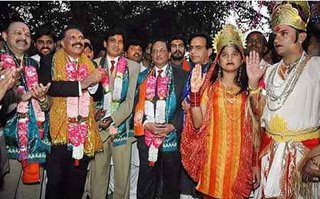Tens of lakhs had to leave their homes with family and belongings, and had to go to the other side of the border. Innumerable people were killed on way.
Two big regions--Punjab and Bengal, were affected but in a different way.
Both states had people with a common culture and language. Yet, there were mass killings in Punjab that resulted in large-scale migration. However, this didn't happen to such a scale in Bengal.
Undivided Punjab or Greater Punjab was a huge region. Such was the level of displacement that entire cities and towns were transformed. The exodus was up to the level of villages, each and every place in Punjab.
So lakhs of people from each district left to the other side of the border. This was unprecedented. Lahore and other cities in Western Punjab too witnessed similar exodus. Muslims left from Eastern Punjab and went to Pakistan, Hindus and Sikhs left their homeland in Western Punjab and came to India.
Except Mewat region, the town of Maler Kotla and a small pocket like Kadian, there was no place that had any sizable concentration of Muslims left in Indian Punjab, after partition. Haryana and Chandigarh were carved out of Punjab, later, and earlier they were part of greater Punjab state.
For example, Ludhiana had more than 3 lakh Muslims in the district before partition. However, after independence, barely a few hundreds remained in the city, and a couple of thousand spread in some rural parts.
SCALE OF VIOLENCE, KILLINGS LED TO MIGRATION IN PUNJAB, BUT NOT IN BENGAL
In sharp contrast, Bengal, another huge province, that was too was divided like Punjab, had a different story. The scale of migration was not such. In fact, large Hindu population remained in Eastern Pakistan, and to this day they remain in Bangladesh.
Also, Muslims remained in Murshidabad, Malda as well as Purnea and Kolkata. Partition caused huge turmoil in North India. People went from Uttar Pradesh (UP), Delhi and Rajasthan-Madhya Pradesh, also. But the situation of Punjab was altogether different.
The violence and killings in Punjab had no parallel. This fear for their lives, drove people to leave their homes. The communal temperature was high in Punjab that had three major religions. Arya Samaj had Shuddhi movement were strong, here.
Parties and their strong organisations had responsibility at grassroots. The role of Congress workers also needs to be remembered. Besides, the part played by the press in Punjab in dividing people among religions lines, is another aspect.
Bengal too had frictions but the level of communalism was not as high among a common Bengali. Perhaps, there was greater cultural affinity too between the communities. Seven decades later, the partition of India, the killings, displacement and its impact, continue to haunt us. Have we learnt any lessons?
[The figure is not to scale and does not claim to represent geographical boundaries. It is just for illustrative purpose. This is an old, pre-independence map and is just for representation and educational purpose.]
























































